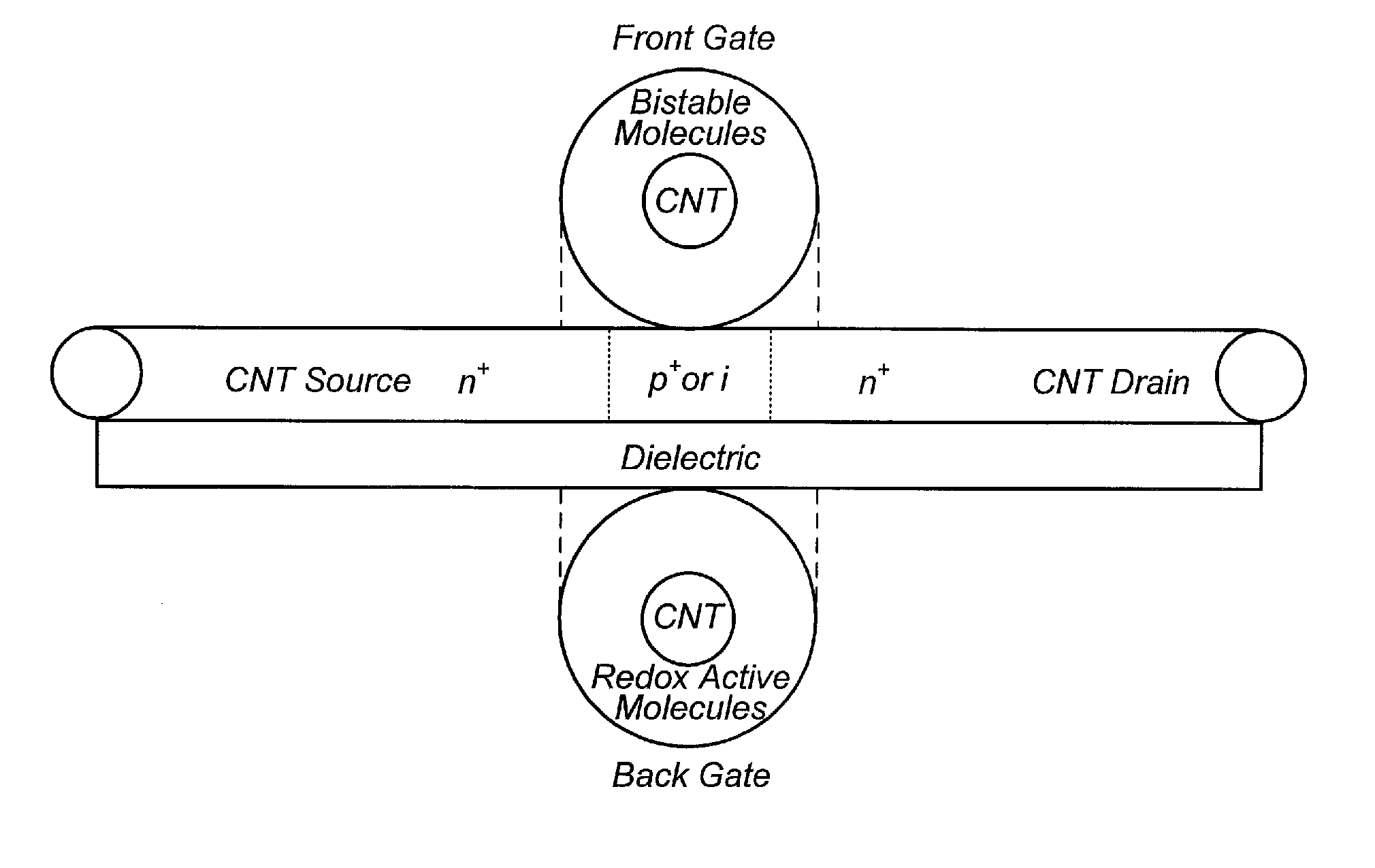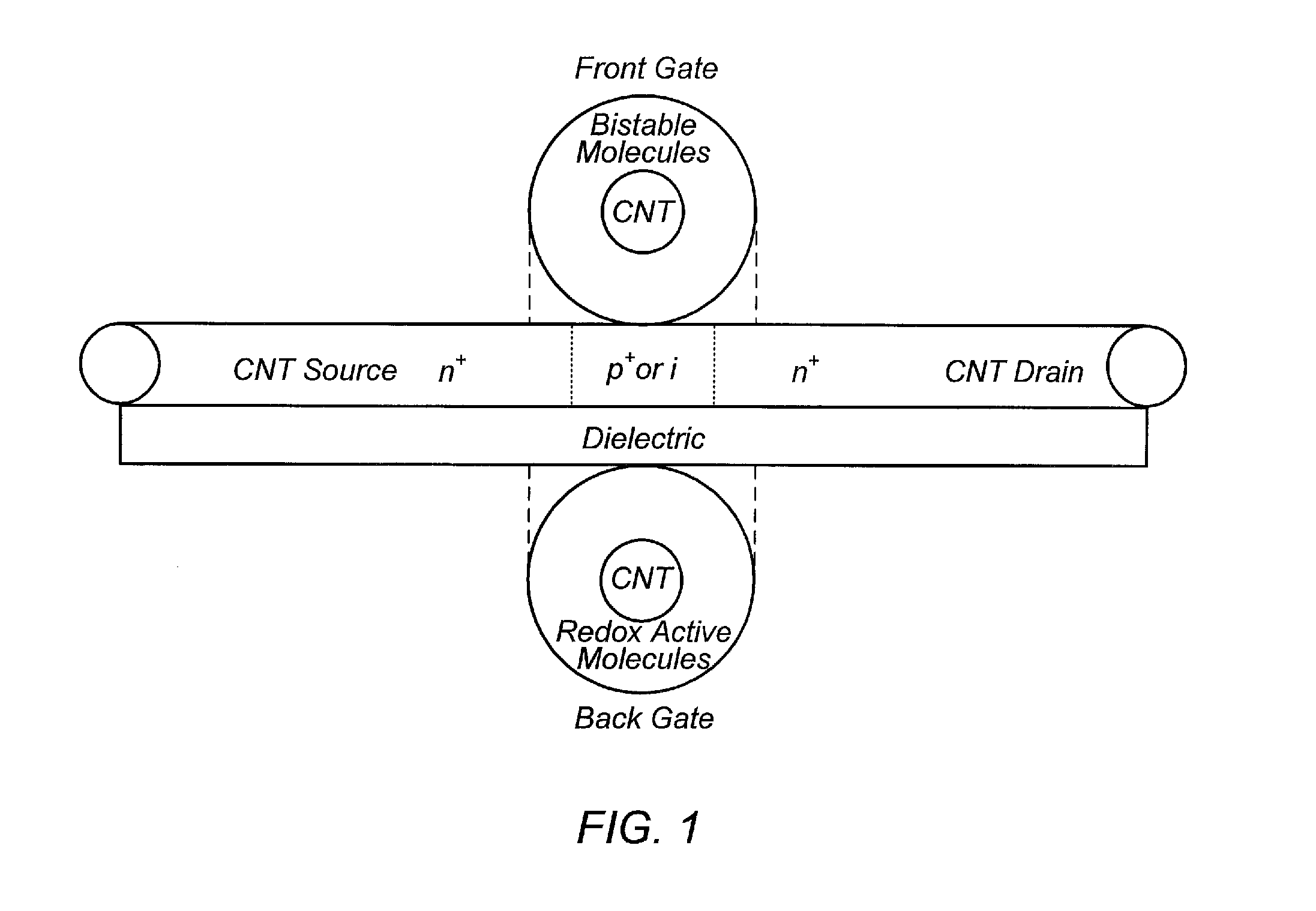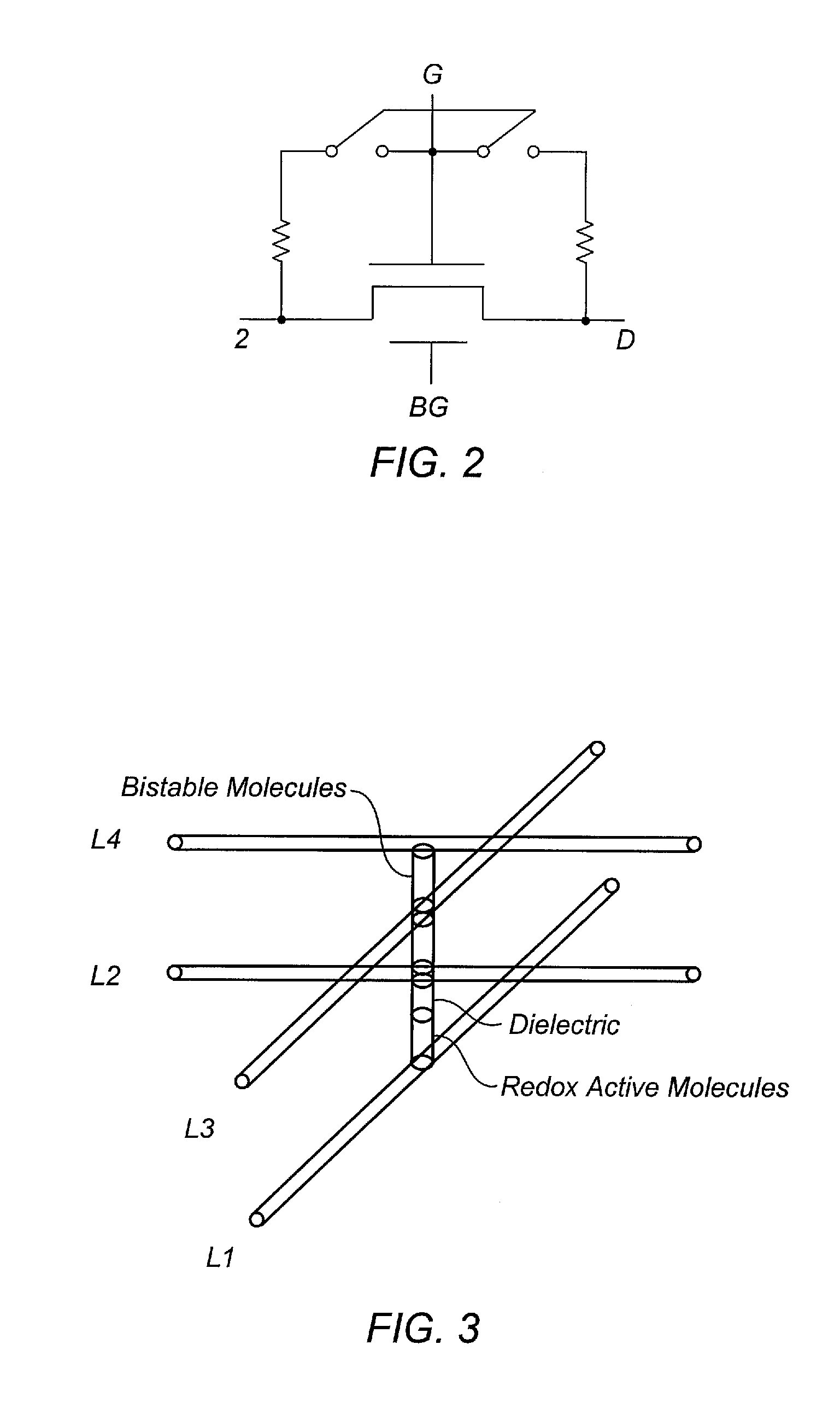Carbon nanotube crossbar based nano-architecture
a crossbar and nano-architecture technology, applied in nanoinformatics, instruments, electric pulse generator details, etc., can solve the problems of significant process variation, inability to avoid variations by manufacturing process improvement, and significant challenges to overcome before reliable high-performance nano-electronic circuits can be achieved
- Summary
- Abstract
- Description
- Claims
- Application Information
AI Technical Summary
Benefits of technology
Problems solved by technology
Method used
Image
Examples
Embodiment Construction
[0043]It is to be understood the present invention is not limited to particular devices or systems, which may, of course, vary. It is also to be understood that the terminology used herein is for the purpose of describing particular embodiments only, and is not intended to be limiting. As used in this specification and the appended claims, the singular forms “a”, “an”, and “the” include singular and plural referents unless the content clearly dictates otherwise.
Reconfigurable Double Gate-Carbon Nanotube Field Effect Transistor
[0044]FIG. 1 is an illustration of the proposed reconfigurable double gate CNFET device, which is constructed by sandwiching electrically bistable molecules in a double gate CNFET. The double gate CNFET is constructed by three overlapping orthogonal carbon nanotubes. The top and the bottom carbon nanotubes form the front gate and the back gate, while doping the carbon nanotube in the middle layer forms the source and the drain of a n- or p-type MOSFET-like CNFE...
PUM
| Property | Measurement | Unit |
|---|---|---|
| channel length | aaaaa | aaaaa |
| gate width | aaaaa | aaaaa |
| resistance | aaaaa | aaaaa |
Abstract
Description
Claims
Application Information
 Login to View More
Login to View More - R&D
- Intellectual Property
- Life Sciences
- Materials
- Tech Scout
- Unparalleled Data Quality
- Higher Quality Content
- 60% Fewer Hallucinations
Browse by: Latest US Patents, China's latest patents, Technical Efficacy Thesaurus, Application Domain, Technology Topic, Popular Technical Reports.
© 2025 PatSnap. All rights reserved.Legal|Privacy policy|Modern Slavery Act Transparency Statement|Sitemap|About US| Contact US: help@patsnap.com



